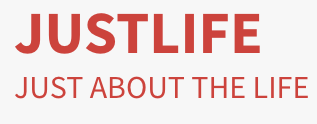As we enter 2025, the landscape of car insurance premiums is evolving, influenced by a variety of factors including economic conditions, regulatory changes, and consumer behavior. This extensive article explores the trends shaping car insurance premiums this year, providing insights into what drivers can expect regarding costs, coverage, and the overall insurance market.
Introduction
The car insurance industry has faced significant challenges over the past few years, leading to unprecedented rate increases. As of 2025, drivers are bracing for continued premium hikes, albeit at a slower pace than in previous years. Understanding the trends that influence these changes is crucial for consumers seeking to navigate their insurance options effectively.
Overview of Car Insurance Premium Trends
Historical Context of Car Insurance Rates
To appreciate the current trends in car insurance premiums, it is essential to look at historical data. Over the past decade, car insurance rates have experienced fluctuations due to various factors such as inflation, accident frequency, and changes in legislation.
Recent Rate Increases
In 2024, auto insurers raised premiums by an average of 16.5%, following a 12% increase in 2023. However, projections for 2025 indicate that average rate increases will slow to approximately 7.5%
. Despite this deceleration, the average cost of full coverage is expected to reach a record high of $2,101 per year
Key Factors Influencing Premium Trends in 2025
Economic Conditions
Inflation and Its Impact on Insurance Costs
Inflation continues to impact various sectors of the economy, including auto insurance. Rising costs for repairs and medical expenses contribute to higher premiums as insurers adjust their pricing models to reflect these economic realities.
Supply Chain Disruptions
The ongoing supply chain issues have led to increased costs for replacement parts and vehicles. With approximately 60% of replacement car parts imported from other countries, any tariffs or trade restrictions could further exacerbate these costs
Regulatory Changes
New Minimum Coverage Laws
Several states have enacted new minimum coverage laws that will take effect in 2025. For instance, California is increasing its minimum liability coverage requirements significantly. Such legislative changes not only enhance consumer protection but also lead to increased costs for insurers, which are often passed on to consumers
State-Specific Regulations
Insurance regulations vary by state and can significantly influence premium rates. States like New Jersey and Washington are expected to see some of the highest rate increases due to their unique regulatory environments and higher claims frequency
Consumer Behavior
Impact of Traffic Violations on Premiums
Drivers with traffic violations can expect substantial increases in their premiums. On average, drivers with infractions will see their rates rise by about 53%, with North Carolina experiencing a staggering increase of 146% for unsafe driving behaviors
The Rise of Electric Vehicles (EVs)
As electric vehicles become more prevalent on the roads, their insurance costs are also changing. While insuring EVs is becoming more affordable overall, they still typically cost about 23% more to insure than gasoline-powered vehicles. However, legacy automakers are offering competitive rates compared to EV-only manufacturers like Tesla and Rivian
Regional Variations in Premium Increases
States with the Highest Rate Hikes
Drivers in certain states will experience more significant increases than others:
- California: Expected premium increases exceeding 15%.
- New Jersey: Anticipated rate hikes around similar levels.
- Washington: Also projected to see substantial increases.
These states face unique challenges such as high claim frequencies and severe weather conditions that contribute to rising costs
States with Minimal Rate Increases
Conversely, some states will see much lower rate hikes:
- North Carolina: Expected increases under 3%.
- Texas: Similarly low rate adjustments.
- Iowa: Among states with minimal changes.
These variations highlight how regional factors can significantly affect car insurance costs
The Future of Car Insurance Premiums
Predictions Beyond 2025
Looking ahead, experts predict that while rate hikes may slow down in 2026 and beyond, external factors such as proposed tariffs on imported goods could lead to renewed increases if repair costs escalate further
Consumer Strategies for Managing Costs
As premiums continue to rise, consumers must adopt strategies to manage their insurance costs effectively:
- Shopping Around: Comparing quotes from multiple insurers can help find better rates.
- Adjusting Coverage Levels: Evaluating necessary coverage amounts can lead to savings.
- Maintaining a Clean Driving Record: Avoiding traffic violations helps keep premiums lower.
Conclusion
The trends in car insurance premiums for 2025 reflect a complex interplay of economic factors, regulatory changes, and consumer behavior. While drivers can expect some relief from steep increases seen in previous years, the overall trajectory remains upward due to inflation and changing market dynamics.



